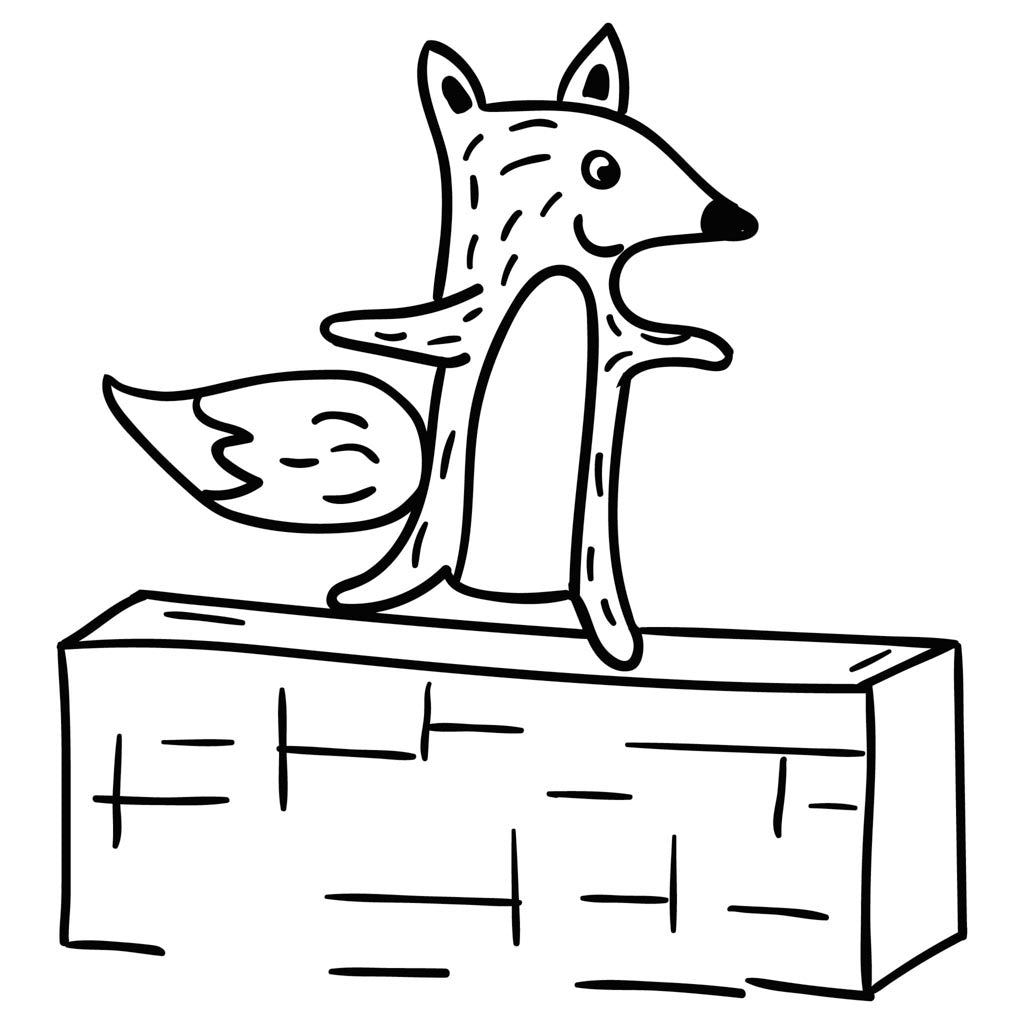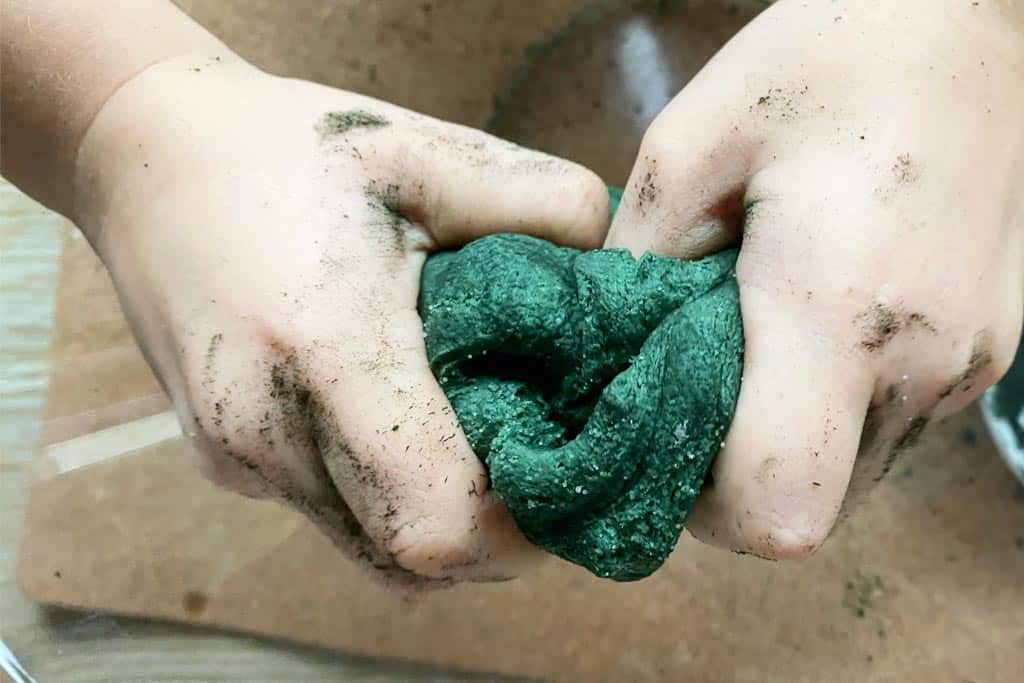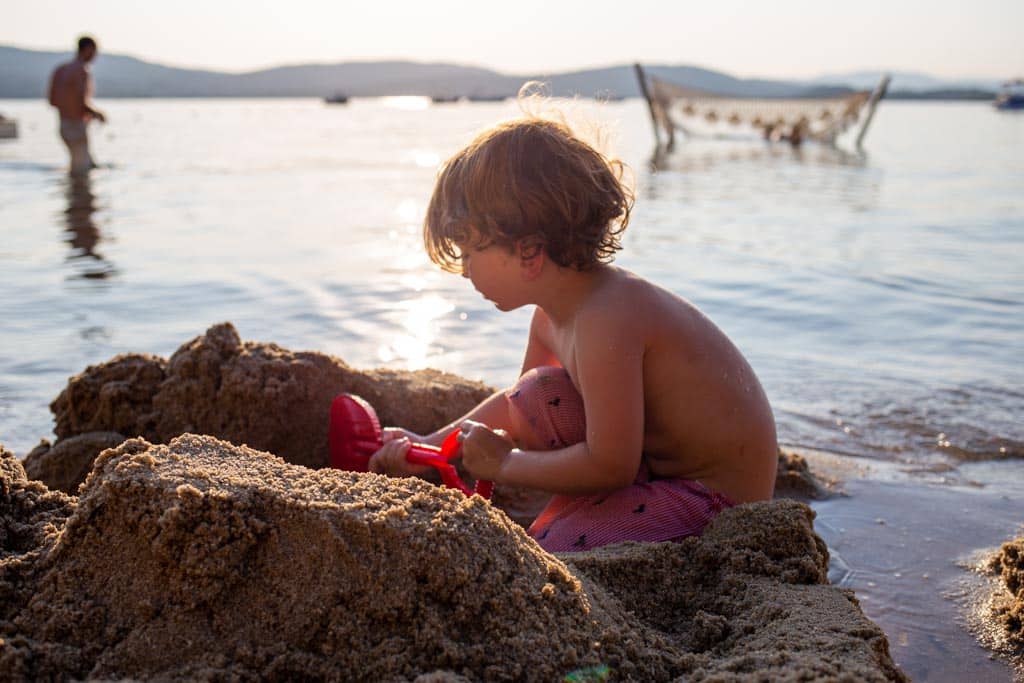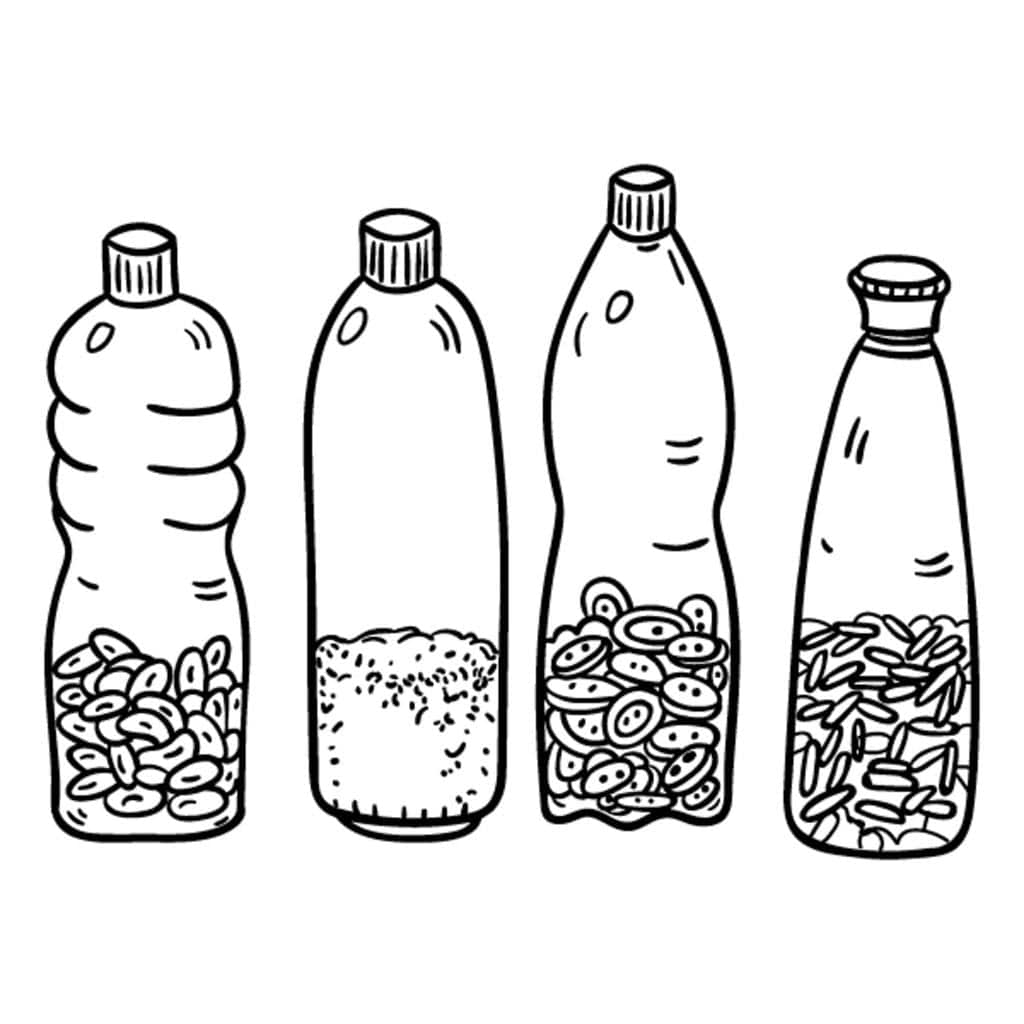Do you have a sixth sense? The answer is: Yes, we all do! No, you may not be able to predict what people are thinking but we all have a lesser-known sense, the vestibular sense.
We are all familiar with the five senses of taste, smell, sight, hearing and touch but the vestibular sense is an internal sense which allows us to stay balanced and, through stabilising our vision, helps us to read more accurately.
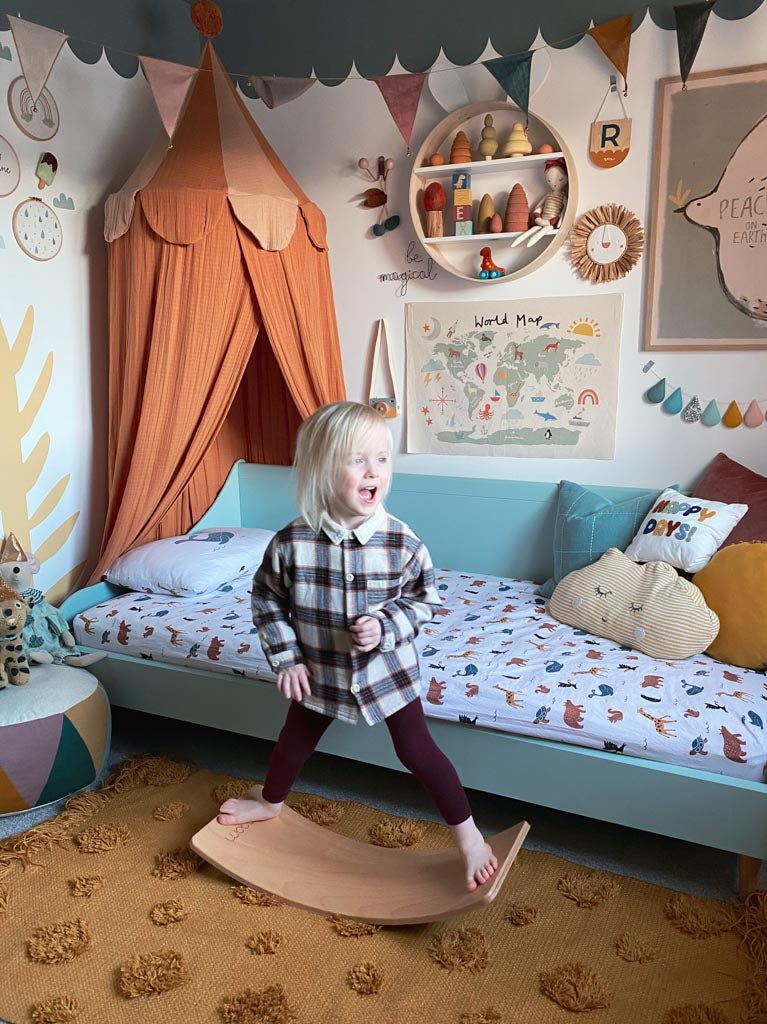
It’s all in the ears
Our ‘vestibular system’ (the inner ear balance system) works alongside our ‘visual system’ (eyes and parts of the brain that work together to help us see) to keep objects clear when we move our head.
Whilst enjoying balance activities like walking, running, moving in a vehicle and so on it helps us to maintain an awareness of our positioning. Think about how you may get queasy when riding in the back of a car and you can’t see the direction of travel. Or when your child is reading or looking at a device in a moving vehicle and they suddenly feel hot and sick! It is the vestibular system at play here, the inner ear and eyes are receiving mixed messages and are unable to tell your brain where you are in space. The result – a very uncomfortable car journey.
The vestibular system is vital for a child’s development, enabling children to thrive and feel confident in their own body. Allowing them to play, learn and the all-important rest.
The vestibular system helps your child to:
- Know if they are standing up, leaning forwards, hanging upside down.
- Remain balanced without falling over whilst they perform a series of movements such as – walking through the park then jumping over a puddle before quickly changing direction to chase a ball.
- Feel safe to run and chase friends or to go high on a swing.
- Follow the teacher whilst reading their work from the whiteboard then moving their head to look at their work and to look back at the board again.
- Use their whole body in gross motor activities such as when learning to ride a bike or use both sides of their body simultaneously with fine motor activities such as cutting and sticking or drawing.
All things that we probably take for granted on a daily basis but without the complex vestibular system working effectively, life can become difficult.
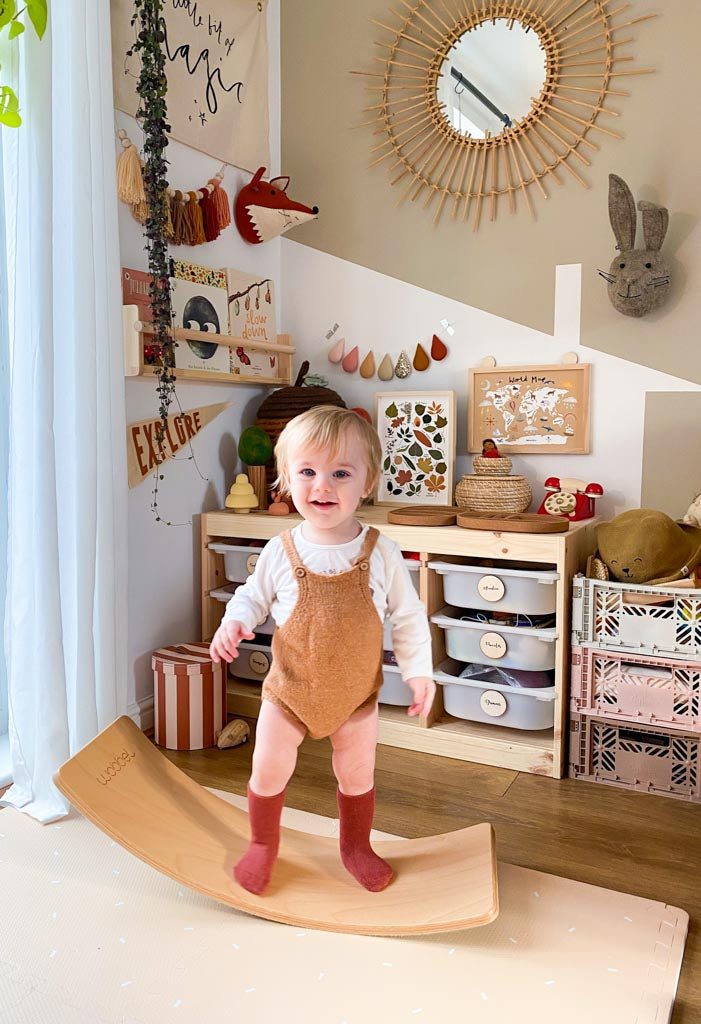
All children develop at different rates but generally the balance development milestone is met between the age of 18 months and 2 years, enabling children to walk upstairs whilst holding on and walk and run with increasing confidence. Good balance is essential in reducing fatigue. When a child is just starting to learn these skills, it takes a great deal of energy and effort, both physically and mentally to master their ability. As time goes on and their movements become more automatic and natural, less energy is used, and they can focus their efforts on other areas of development.
Children who have the opportunity to develop strong balance and coordination are less likely to fall over when running, jumping, and climbing as their core muscles give them a strong base. This helps them stay more stable when sitting with good posture or when moving in a variety of ways. Whole body actions and gross motor movements are essential in developing the foundations for the small fine motor movements needed in activities such as cutting, reading, writing and lots of everyday classroom-based activities when your child is of school age.

What happens when the vestibular system is damaged?
Most of us at one time or another have experienced forms of dizziness. Either in the form of travel sickness, feeling giddy after being on a rollercoaster, standing up too quickly or from an illness such as a cold or an ear infection. The majority of balance issues are temporary and easy to treat. Common causes of balance problems in children include ear infections, headaches, certain medications, or a hearing problem.
For a child that is experiencing a compromised vestibular system and is suffering with poor coordination and dizziness, this can have a profound impact on their emotional and physical well-being. Imagine a park or playground filled with the laughter of young children as they carelessly run around, skipping, jumping, and climbing with their friends. Now imagine the one child who cannot take part or feels totally overwhelmed by the speed at which his friends dash past. The movement is making him feel completely disorientated.
A vestibular ‘disorder’, however, can lead to chronic dizziness, vision and hearing changes and vertigo. This is where a trained therapist can help. Through exercises designed to retrain the ears and brain, and a process known as vestibular adaptation, the balance system is rehabilitated. Gaze and posture are stabilised and everyday activities become more manageable.
How can I tell if my child has problems with their balance and coordination?
They may:
- Fall easily
- Be scared of heights or of going on play equipment such as swings
- Become tired quicker than their friends
- Move stiffly or run in ‘robot’ fashion (they may be avoiding moving their head and neck to limit head movements which can cause dizziness)
- Have trouble navigating uneven ground
- Have difficulty getting dressed whist standing up and may prefer to sit on a chair
- Have poor spatial awareness and appear ‘clumsy’
What can be done to help improve balance?
It is vital to seek medical advice if you are concerned about your child’s health but there are specific areas that can be worked on in order to support or develop a strong sense of balance –
- Focus on activities to strengthen the core muscles
- Improve overall muscle strength and endurance
- Improve sensory processing – gentle exposure to movement is key
- Encourage good posture – hugely important to keep the eyes, head, ears, neck in their correct position to each other!

10 balance activities
Each child develops at a different rate so please use caution and adapt activities to your child’s abilities… don’t run before you can walk!
- Babies get lovely opportunities for vestibular input as they enjoy flying through the air in the arms of a loved one, or from being gently swayed and rocked to sleep. They actually develop their vestibular sense in the womb and it is stimulated by the movements made by the carrying mothers’ body!
- Go for a walk – possibly the simplest but one of the most important activities for balance development. Aim to cover a variety of uneven surfaces, from paths and woodland trails, to grass and the beach
- Path of pillows – create a mini obstacle course in your living room and encourage your child to walk on pillows of different thicknesses with bare feet
- Hopscotch – the classic balance game.
- Jumping on a bed – sorry!
- Ride a bike or scooter
- Bouncing – on a trampoline or large ball
- Standing on a balance board
- Ride on a swing
- Yoga or action songs such as heads, shoulders knees and toes
Use spinning with caution – some children crave and seek strong vestibular input such as with spinning but be wary of spinning your child, (instead of letting them be in control of how much they spin) this can cause the brain to go into protective mode – resulting in sickness, meltdowns and prolonged feelings of dizziness.
Take activities slowly and at your child’s pace. Some children love strong vestibular input and others will need a softer approach. Both are fine.
How does balance affect learning?
We know the importance of the vestibular system and its essential role in supporting balance, spatial awareness, muscle tone and postural control but what about its impact on our eye movements? Once children reach school age and the demands on learning through reading and writing increases, good control over eye movements is essential. Things we take for granted, such as being able to scan words from left to right and back to the left again. Or switching our gaze from the teacher to our work, to the board and then back to our work again. For a child with a vestibular issue or disorder keeping up with simple classroom tasks can result in a child that may appear disinterested in their work, or may even present with behavioural problems in a bid to detract attention away from the fact they are struggling to keep up. A watchful eye is needed to ascertain the root cause of a child’s ‘disinterest’ as there is usually an underlying factor.
“Life is like riding a bicycle. To keep your balance, you must keep moving.”
Albert Einstein
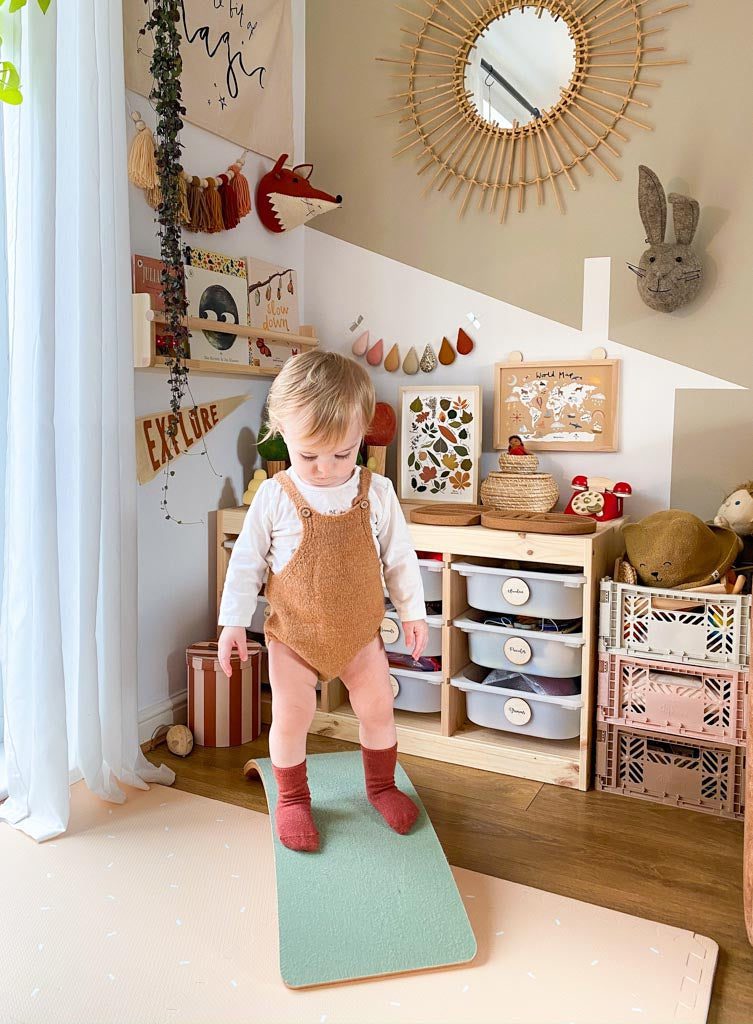
Benefits of a balance board
You don’t need to buy any toys to improve your child’s balance – DIY balance activities work just fine – but there’s one that can have beneficial effects on those days when you’re too busy to leave the house: a balance board. Sway gently by sitting or kneeling or stand and enjoy the full experience. This builds core strength and encourages children to get accustomed to vestibular input, whilst aiding their sense of proprioception. Read more about balance boards.
How to use a Wobbel board
- As a ‘rocking chair’
- With one end propped up it becomes a slide
- A soothing place to rest and read
- As a place to achieve ‘active’ sitting for a child who finds sitting still difficult
- To stand on and rock, rock, rock
Final word
Some children go out of their way to avoid strong sensory input, some babies may not like playing the aeroplane game, whilst others love movement and seek it out in their play. Others need and crave to get input from constantly being on the go and find it difficult to sit still. Respond to your child’s individual needs in a respectful manner, and as always if you follow their lead you will not go far wrong.
If you are reading this and it resonates with you that your child is having a hard time with reading and writing and the usual things have been checked such as eye tests and all checks out fine then consider looking at the vestibular system as a key to understanding your child’s development. Often a child that has been diagnosed as having dyslexia can have trouble with their balance and coordination too. No amount of army style drilling learning letters is going to help here, but you never know – regular trips to the park may make a world of difference!

